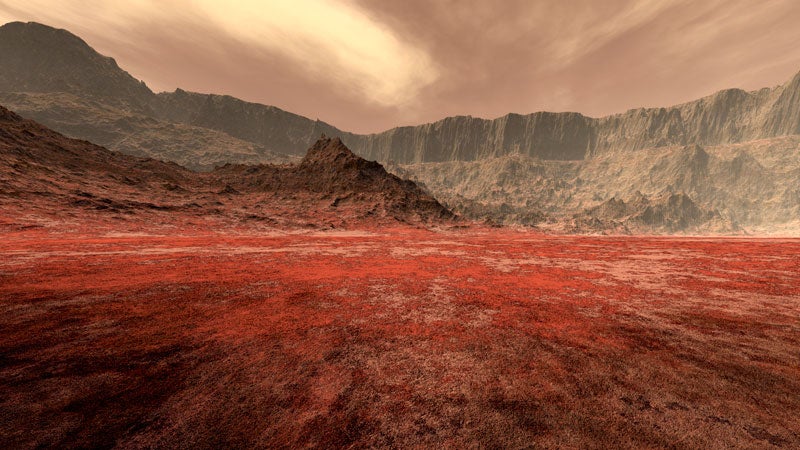The past couple of decades have seen the space exploration community shift its attention , with NASA sending multiple rovers to Mars and scientists considering what it would take to put humans on the Martian surface. If you believe earlier this week, the agency seems to be doubling down on the goal of a manned mission to Mars.
Speaking Tuesday at George Washington University, Bolden introduced “NASA’s stepping-stone approach to Mars,” pledging to make good on President Obama’s and to Mars by the 2030s.
The first step toward getting to Mars hinges on the International Space Station, which Bolden called “our springboard to the exploration of deep space.” With guaranteed funding through at least 2024, Bolden said the ISS provides “an expanded market for private space companies, more groundbreaking research and science discovery in microgravity, and opportunities to live, work, and learn in space over longer periods of time.” Research gathered during long-term stays on the ISS will provide clues about how humans could survive a deep-space mission.
NASA’s next step sounds like something straight out of a science fiction novel: Bolden described the agency’s deep-space goal as a “mission to capture and redirect an asteroid to orbit the moon.” The mission, planned for the 2020s on a spacecraft named , would help astronauts gain experience traveling beyond low Earth orbit and would provide a useful testing ground for .
In the interim, Bolden said that NASA will continue to send robotic spacecraft to explore the red planet’s surface, gathering data to ensure safety for the astronauts who’ll explore Mars. With this multistep approach, NASA seeks to develop safe technologies capable of getting astronauts to Mars—and back.
“It is important to remember that NASA sent humans to the moon by setting a goal that seemed beyond our reach,” said Bolden, in an effort to assuage skeptics. But doubts remain.
Bloomberg wrote about NASA’s “,” explaining that “manned exploration of the solar system was a dream for baby boomers,” and that “kids deserve something no less inspirational and even more practical.” The post alluded to the fact that Bolden’s speech took place on Earth Day, pointing out that the agency is “one of the world’s critical centers for monitoring Earth’s life-support systems.” Rather than ambitious missions to Mars, NASA could, in the eyes of some, choose to focus on the health of our planet instead.
Of course, NASA is well aware of the threats facing Earth. The agency made headlines last month when a study it funded warned against the end of the world as we know it. Whenever a Mars mission occurs, we can only hope that it’ll be one borne from curiosity, not desperation.


